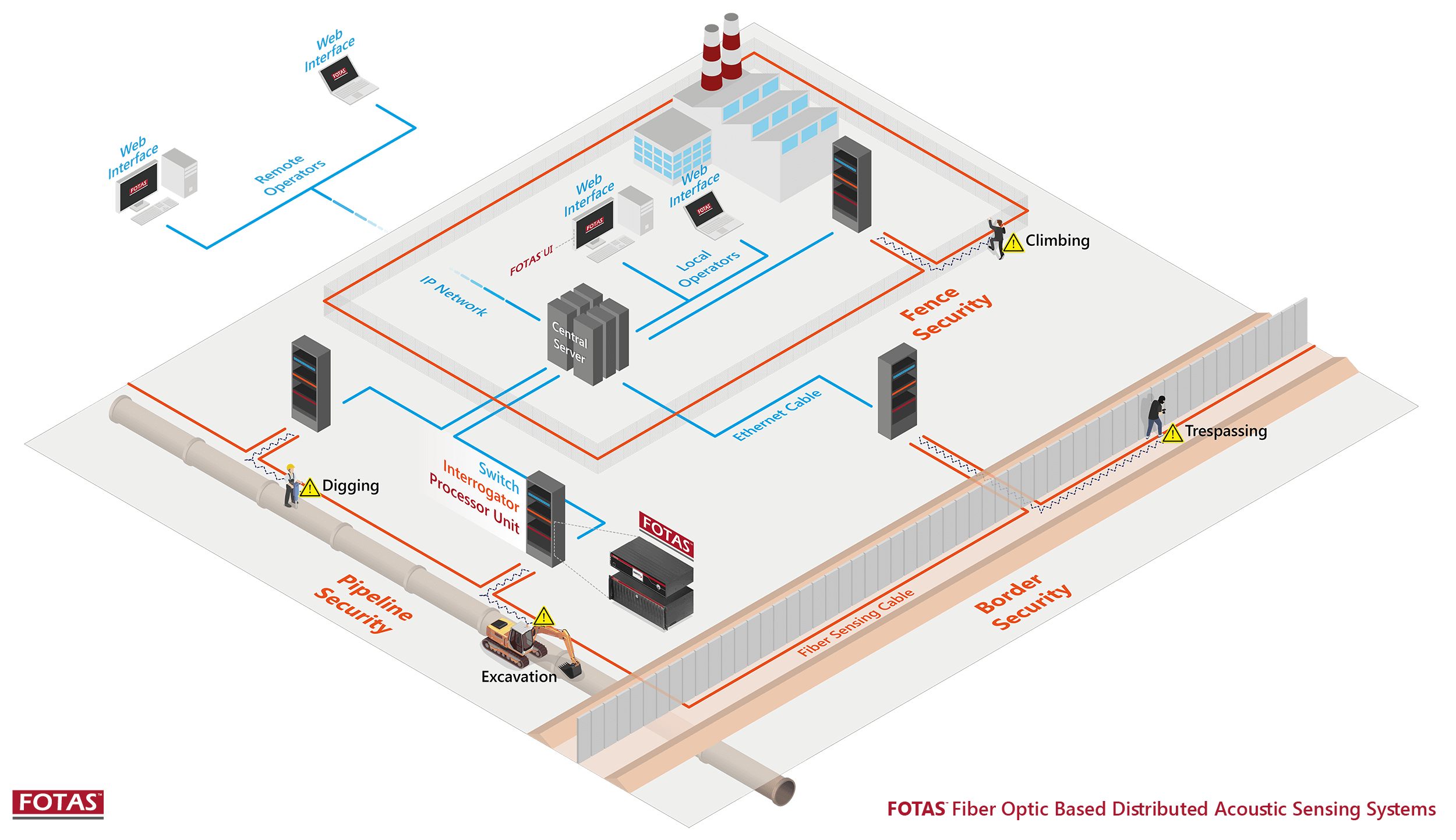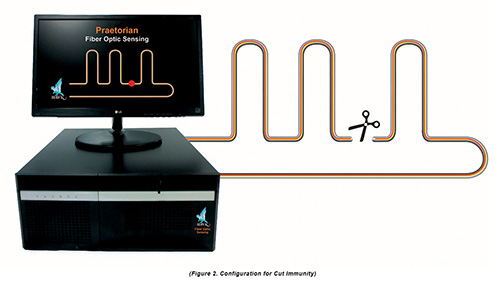How Security Fibers Are Used to Enhance the Efficiency of Security Surveillance Systems
How Security Fibers Are Used to Enhance the Efficiency of Security Surveillance Systems
Blog Article
Why Fiber Optic Security Solutions Are the Future of Protection
The change to fiber optic safety and security systems marks a considerable improvement in the world of security, driven by their extraordinary data transmission capacities and strength to external disturbances. These systems not just help with faster and a lot more trusted interaction however additionally offer an affordable remedy with decreased upkeep demands. As the landscape of safety and security develops along with emerging innovations such as AI and IoT, the capacity for optical fiber to boost and redefine safety and security infrastructures comes to be progressively apparent. The implications of these developments increase important concerns regarding the future of protection measures and their efficiency in an ever-changing setting.
Advantages of Fiber Optic Equipments
Among the primary benefits of fiber optic systems is their remarkable bandwidth capability, which promotes the transmission of large volumes of data over fars away without substantial loss. This particular is especially beneficial for security applications that call for the constant tracking and transfer of high-definition video feeds, sensing unit data, and other crucial details. Fiber optics can suit the growing needs of contemporary protection systems, ensuring that information remains undamaged and reputable.
Furthermore, fiber optic cables are much less vulnerable to electro-magnetic interference, which can be a substantial problem in environments with different digital tools. This resistance enhances the honesty of the data being transferred, consequently reducing the risk of data violations or system failures. Fiber optic systems are inherently a lot more secure than standard copper cords, as tapping into a fiber optic line without detection is exceptionally challenging.
The durability of fiber optic cable televisions additionally adds to their appeal. They are immune to ecological elements such as wetness and temperature level variations, lowering maintenance expenses and boosting system durability. On the whole, these benefits setting fiber optic systems as a robust and reliable choice for modern safety and security facilities, guaranteeing trusted and secure data transmission.
Enhanced Data Transmission Rate

The ability to send huge quantities of information promptly promotes the smooth combination of high-definition video feeds and advanced analytics. Safety and security systems can now process and examine details in real-time, boosting response times and situational recognition. In addition, fiber optic links support longer transmission distances without destruction of signal top quality, making them excellent for large protection networks.
The raised rate of fiber optic systems not only enhances the effectiveness of safety operations but likewise minimizes latency. This is specifically crucial in crucial circumstances where timely decision-making can protect against safety breaches or reduce possible hazards. As organizations remain to focus on safety and effectiveness, the need for rapid and trustworthy information transmission will certainly strengthen fiber optic systems as a cornerstone of modern protection facilities.
Resistance to Disturbance
Fiber optic security systems constantly demonstrate extraordinary resistance to electro-magnetic disturbance, an important advantage in environments prone to digital sound. Unlike standard copper cable televisions, which can be adversely influenced by magnetic fields, radio frequency disturbance, and other kinds of electric disturbance, best site fiber optic cables utilize light to send data. This fundamental residential or commercial property makes certain that the signals continue to be clear and unaltered, no matter of surrounding electronic activity.
Making use of glass or plastic fibers in fiber optic innovation develops an obstacle against interference, allowing for trusted data transmission even in difficult scenarios such as industrial centers, urban locations with high electronic website traffic, or areas near radio towers. This characteristic significantly minimizes the probability of signal degradation or loss, making fiber optic systems especially ideal for protection applications where integrity and precision of information are paramount.
Additionally, this resistance to disturbance improves the general efficiency and integrity of protection systems, ensuring that tracking and alert systems work effortlessly. In a globe where safety and security is increasingly endangered by innovative technologies, the strength of fiber optic systems stands out as a critical attribute, strengthening their condition as an important component of modern safety and security framework.
Cost-Effectiveness Gradually
Substantial price financial savings look at this website can be accomplished in time with the application of fiber optic safety and security systems. While the initial investment may appear greater contrasted to standard copper-based systems, the lasting monetary benefits end up being apparent with decreased functional and maintenance expenses (fiber security). Fiber optic cable televisions are inherently a lot more resilient and much less vulnerable to environmental variables, which equates to decrease replacement and repair work expenses over their lifespan
In addition, fiber optic systems require less power to run, which even more reduces power costs. Improved information transmission capabilities permit fewer repeaters and amplifiers, reducing devices investment and simplifying installation procedures. The scalability of these systems also adds to cost-effectiveness, as organizations can broaden their safety infrastructure without incurring substantial additional costs.
An additional element to take into consideration is the enhanced performance in monitoring and reaction capacities that fiber optics supply. Boosted real-time information transmission can result in quicker incident reaction times, possibly mitigating losses and obligations related to security breaches. In sum, the lasting advantages of fiber optic security systems not only validate the preliminary expense however also position them as a monetarily prudent choice for organizations looking for durable protection solutions.

Future Advancements in Security
Advancing technologies are readied to reinvent safety systems, integrating expert system (AI) and artificial intelligence to improve danger discovery and response capacities. These technologies will certainly allow protection systems to assess large amounts of data in real-time, identifying click here to find out more patterns and anomalies that show prospective threats. This positive strategy will enable much faster decision-making and a lot more efficient case actions.
Additionally, the incorporation of the Web of Things (IoT) is leading the method for interconnected safety devices, offering extensive surveillance and tracking. Smart sensors can pass on info concerning environmental adjustments, while automated signals can inform safety employees right away of dubious activities.
In addition, the development of biometric innovations will further bolster security systems. Facial recognition, fingerprint scanning, and retina recognition are ending up being extra sophisticated, giving layers of authentication that are hard to bypass.
Final Thought
Finally, fiber optic security systems represent a considerable advancement in protection innovation, providing unequaled information transmission speed, resistance to electro-magnetic disturbance, and long-term cost-effectiveness. As the demand for sophisticated security solutions remains to grow, the assimilation of fiber optics with arising innovations such as AI, IoT, and biometrics will certainly better boost protection facilities (fiber security). The combination of these technologies will certainly make certain a more safe and responsive setting, strengthening optical fiber as a foundation of future safety and security systems
Report this page